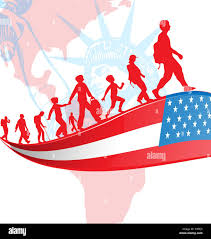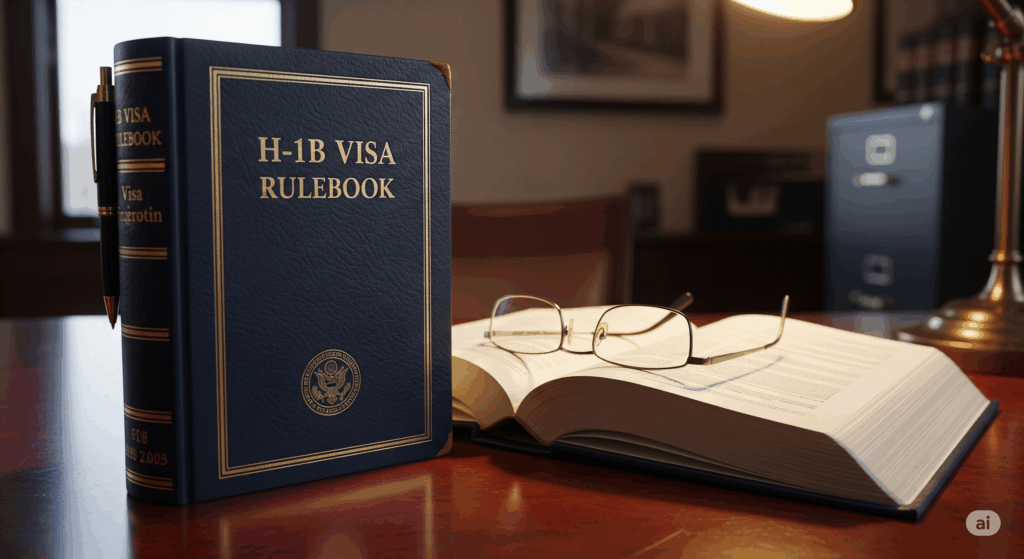Amy Ghosh is a Los Angeles-based Attorney at Law, specializing in Immigration Law, Family Law, and Employment Law, among others. She can be reached at: amygesq@gmail.com
The Child Status Protection Act (CSPA) was enacted to provide relief to children who “age-
out”—that is, turn 21 and lose their preferential immigration status as a “child”—as a result of
either visa backlogs or delays by the U.S. Citizenship and Immigration Services (USCIS) in
processing visa petitions and asylum and refugee applications. The Immigration and Nationality
Act (INA) defines a “child” as an unmarried individual under 21 years of age.3 The CSPA does
not change this definition, but instead changes the point at which the child’s age is calculated.
Prior to the CSPA, a child who turned 21 before the relevant application for immigration benefits
was decided would age-out. As the result of agency delays and visa backlogs, many children
aged out before their cases were complete. For cases to which it pertains, the CSPA now freezes
the age of the child at an earlier date in the process, and the frozen age—rather than the child’s
biological age—is used to determine eligibility for certain immigration benefits. In this way the
CSPA preserves the status of “child” for many individuals who otherwise would age out.
The CSPA’s method of calculating a person’s age varies depending on the type of immigration
benefit that is sought. The CSPA applies to:
Derivative beneficiaries of asylum and refugee applications;
Children of U.S. citizens;
Children of lawful permanent residents (LPRs); and
Children named as derivative beneficiaries of family and employment-based visa
petitions, and diversity visa applications.
According to USCIS, the CSPA does not apply to applicants for or derivatives of the Nicaraguan
Adjustment and Central American Relief Act; Haitian Refugee Immigration Fairness Act;
Family Unity; Special Immigrant Juvenile Status; Cuban Adjustment Act; or nonimmigrant
visas. While the Board of Immigration Appeals (BIA) has held that, generally, the CSPA does
not apply to K visas because these are non-immigrant visas, USCIS has outlined limited
circumstances where it finds that the CSPA will cover K-4 beneficiaries. The BIA also has held
that the CSPA does not apply to prevent a qualifying relative from aging-out for purposes of
cancellation of removal.
The CSPA was effective on August 6, 2002. It applies to all children who turn 21 after this
effective date, provided all other requirements of the CSPA are met. The statute has an
effective date provision (section 8) which governs how the statute is to be applied to cases in
which some relevant event occurred prior to August 6, 2002, the date that the CSPA was
adopted, but other events took place after this date. USCIS has interpreted this provision as
applying the CSPA to three sets of cases:
Cases in which the visa petition was approved prior to August 6, 2002, but a final
determination has not been made on a beneficiary’s application for an immigrant visa or
adjustment of status pursuant to the approved petition;
Cases in which the visa petition is pending on or after August 6, 2002; and
Cases in which the application for an immigrant visa or adjustment of status is pending
on or after August 6, 2002.
USCIS had interpreted the statutory term “final determination” (as used in CSPA §8(1)) to mean
agency approval or denial issued by USCIS or EOIR.65 In contrast, the Ninth Circuit in Padash
- INS, rejected the interpretation of a “final determination” as limited to an agency
determination, and instead found that there was no final determination of an adjustment
application when an appeal of the agency’s denial of the application was pending in federal
court.
Both USCIS and DOS agree that the statute applies to a child who ages out after August 6, 2002,
the statute’s effective date. In determining whether a child aged out before or after this date, it is
important to remember the 45-day extension contained in the USA PATRIOT Act. See section 3,
supra.CSPA §8 (not codified in the INA).
The Ninth Circuit first found that Padash satisfied the definition of a child under §3 of the CSPA
(8 USC §1153(h)(1)). The court next considered whether the CSPA applied to him. Following
basic rules of statutory interpretation, the court determined that because the appeal of his
adjustment of status application was pending before the court on the effective date of the statute,
no “final determination” had yet been made on the application and the CSPA did apply to him.
The BIA also has resolved an issue relating to the meaning of CSPA § (8)(1).
In Matter of Avila-Perez, the BIA held that the CSPA applied where a visa petition for an immediate relative was approved prior to August 6, 2002, but no adjustment application was pending on that date. Instead, the adjustment application was filed subsequently. In so holding, the BIA rejected DHS’ argument that, for this effective date provision to be triggered, an adjustment application musthave been pending on August 6, 2002. Over a year later, USCIS issued a new memorandum that, inter alia, implements the holding of Matter of Avila-Perez. This memo reverses USCIS’s earlier position that had required an application for permanent residence to be pending on August 6, 2002. It also attempts to remedy the situation for those wrongly denied or discouraged from filing under the old policy. First, it allows a beneficiary of a visa petition approved prior to August 6, 2002 to file a motion to reopen his or her adjustment application where that application had been denied under the prior policy because it was filed after August 6, 2002, provided the beneficiary meets all other requirements for CSPA coverage. Second, the memorandum also provides for those who did not apply for adjustment of status butwho would have been eligible but for the erroneous agency policy. It allows a beneficiary whose visa became available on or after August 7, 2001 (one year prior to the statute’s adoption date),to apply for adjustment now, even though this adjustment application would not be filed within one year of the visa availability date.
On February 18, 2023, U.S. Citizenship and Immigration Services has issued guidance in the USCIS Policy Manual to update when an immigrant visa number “becomes available” for the purpose of calculating a noncitizen’s age in certain situations under the Child Status Protection Act (CSPA).
This USCIS policy change is effective immediately and applies to pending applications. Therefore, some noncitizens with a pending application may now have a CSPA age that is under 21 based on this change. For example, between October and December of 2020, certain noncitizens were permitted to file their adjustment of status applications under the Dates for Filing chart of the Visa Bulletin. However, the Final Action Date chart never advanced sufficiently for their applications to be approved. These noncitizens filed their adjustment of status applications with the requisite fee without knowing whether the CSPA would benefit them.
Under this new guidance, USCIS will now use the Dates for Filing chart to calculate these noncitizens’ ages for CSPA purposes, which provides these noncitizens with more certainty about their eligibility to adjust status. If these noncitizens are eligible to adjust status because of the change in policy and they have filed for adjustment of status, they will also be eligible to apply for employment and travel authorization based on their pending adjustment of status application, and they generally will not lose previously issued employment or travel authorization.
Non  citizens may file a motion to reopen their previously denied adjustment of status application with USCIS by using Form I-290B, Notice of Appeal or Motion. Noncitizens must generally file motions to reopen within 30 days of the decision. For a motion filed more than 30 days after the denial, USCIS may, in its discretion, excuse the untimely filing of the motion if the noncitizen demonstrates that the delay was reasonable and was beyond the noncitizen’s control.
citizens may file a motion to reopen their previously denied adjustment of status application with USCIS by using Form I-290B, Notice of Appeal or Motion. Noncitizens must generally file motions to reopen within 30 days of the decision. For a motion filed more than 30 days after the denial, USCIS may, in its discretion, excuse the untimely filing of the motion if the noncitizen demonstrates that the delay was reasonable and was beyond the noncitizen’s control.



